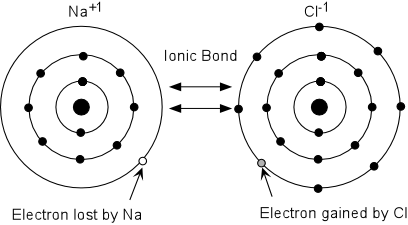Fill in the gaps with the correct word or word-combination from above.
1. The __________ is a basic unit of matter that consists of a dense central nucleus surrounded by a cloud of negatively charged electrons.
2. An __________ is an atom or molecule in which the total number of electrons is not equal to the total number of protons, giving the atom a net positive or negative electrical charge.
3. __________ are ionic compounds that result from the neutralization reaction of an acid and a base.
4. One __________ consists of two atoms of oxygen.
5. The electrically neutral __________ contains a single positively charged proton and a single negatively charged electron bound to the nucleus.
6. __________ is a chemical compound composed of two oxygen atoms each covalently double bonded to a single carbon atom.
3. Translate the sentences into English without using a dictionary.
1. Конечно, знание строения атома сыграло важную роль в развитии химии. 2. Современная наука располагает точными знаниями о структуре и свойствах атомов и молекул. 3. Химическая реакция происходит, когда атомы взаимодействуют друг с другом и образуют новые комбинации. 4. Дать определение молекулы — значит сказать о ее составе и свойствах. 5. Молекулы, как известно, электрически нейтральны. 6. Существуют соединения, имеющие одинаковый состав, но разную структуру. 7. Насколько я помню, чистые вещества впервые были получены алхимиками. 8. Многие ученые создавали свои модели строения атомов. 9. Берцелиус ввел современные символы для химических элементов. 10. Водород — самый легкий химический элемент.
Look at the picture and comment on it from the point of view of chemistry.
Look through the text and find the main concepts of chemistry. Complete the chart. Give a definition for each concept and compare it with the definitions of your groupmates.
Read the following word-combinations.
| octet rule |
| attractive force |
| electro-negativity difference as far as chlorine is concerned more stable nothing but outermost valence shell |
Replace the underlined words with their English equivalents from the list. Give the general idea of the text in 2-3 sentences.
IONIC BONDS
An ionic bond is a type of chemical bond, in which one atom gives away/transfers its valence electron to another electron, to gain stability according to the правило октета, thus, forming oppositely charged ions. When an ionic bond is formed, a negative ion and positive ion is formed, which are attracted to each other, thereby maintaining the bond. The сила притяжения between the negative and positive ions increases as the distance between the atoms decreases. Ionic bonds are formed between metals and nonmetals, with significantly large различие электроотрицательности. Ionic bonds are weaker than covalent bonds.
 The most common and popular example of an ionic bond is that of sodium chloride or table salt. Since sodium (Na) possesses 11 electrons (2, 8, 1), with one electron in the внешней валентной оболочке. Thus, Na is able to give off one electron easily to form Na+ ion, whereby it becomes more stable as per the octet rule. Что касается хлора, it belongs to the halogen group, possesses 17 electrons (2, 8, 7), with seven electrons in its outermost shell. Thus, chlorine can easily gain an electron to form Cl- ion, whereby it becomes более стабильный as per the octet rule.
The most common and popular example of an ionic bond is that of sodium chloride or table salt. Since sodium (Na) possesses 11 electrons (2, 8, 1), with one electron in the внешней валентной оболочке. Thus, Na is able to give off one electron easily to form Na+ ion, whereby it becomes more stable as per the octet rule. Что касается хлора, it belongs to the halogen group, possesses 17 electrons (2, 8, 7), with seven electrons in its outermost shell. Thus, chlorine can easily gain an electron to form Cl- ion, whereby it becomes более стабильный as per the octet rule.
When one Na atom comes in contact with one Cl atom, the Na atom will readily give up its electron to become a more stable Na+ ion, while the Cl atom will readily accept the electron to form a more stable, Cl- ion. The resultant ions are oppositely charged, which is why they get attracted to each other, until they touch each other, forming Na+Cl- ‘molecule’. The electric attraction between Na+ and Cl- ions is ничто иное как the ionic bond. Ionic bonds are not as strong as covalent bonds, which is why we are able to break salt into smaller pieces.
